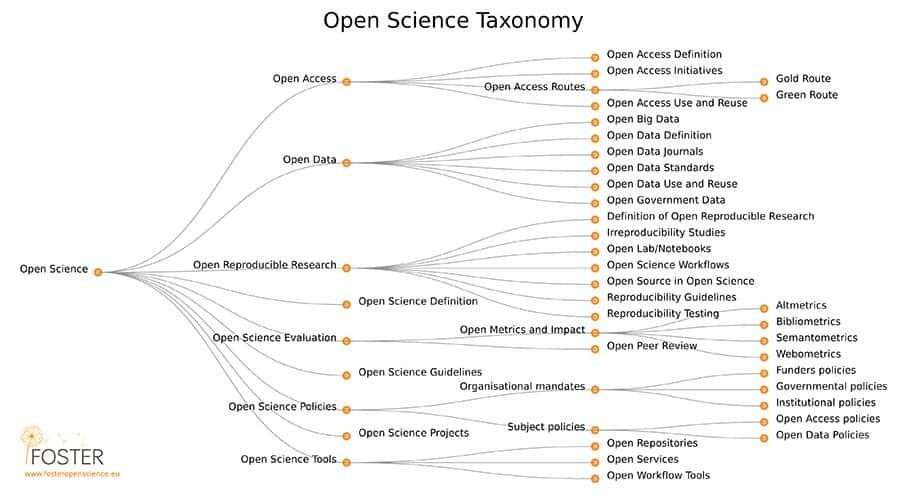Open Science is a movement that promotes a philosophy and a way of working aimed at promoting and facilitating collaboration in research processes as well as the free dissemination of both the source data used and the results of scientific research, enabling maximum access and reuse, return on investment and transparency, in a conceptualization of scientific knowledge as a public good. In this article we address its concept, dimensions and strategic areas of development.
The concept of Open Science
The openness of science and collaboration among researchers are fundamental drivers of scientific progress in that they facilitate access to the advances made, their review and criticism, as well as the replicability of research. The origins of these working dynamics and the conception of scientific knowledge as a common good date back to the 16th and 17th centuries (Eamon 1985), as well as the structures of funding and institutionalization of science (David 2008). However, the revolutionary element of modern science has been the applications and enormous potential of ICT. Thus, we speak of eScience or science facilitated and empowered by digital technologies, as the general framework of modern science in which Open Science (David, Besten and Schroeder 2009) and Science 2.0 (David, Besten and Schroeder 2009) are situated.
FOSTER (Facilitate Open Science Training for European Research), a project funded by the European Commission, defines Open Science in the following manner: “Open Access refers to online, free of cost access to peer reviewed scientific content with limited copyright and licensing restrictions.”
Moreover, the U.S. Center for Open Science (COS) sees as the main objective of Open Science (Nosek, 2017) the achievement of a scholarly community in which:
- The process, content, and outcomes of research are openly accesible by default;
- All scholarly content is preserved and discoverable, and openness, interoperability, and transparency are normative for scholarly services;
- All stakeholders are included and respected in the research lifecycle; and
- All stakeholders share pursuit of truth as the primary incentive and motivation for scholarship.
OS admits that to achieve this goal it will be necessary to promote a change of culture in relation to the incentives that guide the behavior of researchers, the infrastructures that support research and the business models that dominate scientific communication.
Dimensions of Open Science
Open Science is a multilevel phenomenon. FOSTER has developed the following taxonomy, in which he tries to collect its numerous facets, ranging from its conceptualization, public and private policies, technologies, legal aspects, evaluation, etc.

Dimensions of Open Science, according to the FOSTER taxonomy.
Schools
Fecher and Friesike (2014) summarize in five schools of thought the various theoretical and practical efforts developed so far in the world for the achievement of Open Science:

Strategic areas of development
The Open Science Monitor is the evaluation tool developed by the European Commission to measure progress in the three priority areas of action on which Open Science efforts in Europe have been concentrated:
- Open Access to publications: the number of open access publications, preprints, articles published before peer review on alternative platforms (F1000Research), archiving and publication policies of funding entities, journal policies on Open Access, and the attitudes of researchers towards Open Access are assessed.
- Open Research Data: the number of available data repositories (e.g. Figshare and GenBank), the data sharing policies of funding agencies, and the attitudes of researchers towards data sharing are evaluated.
- Open Scientific Collaboration: the number of APIs in the APIs for science category of the ProgrammableWeb repository, the open code policies of the journals, the number of open hardware projects in the Open Hardware Repository, and the number of citizen science projects listed in SciStarter and Zooniverse are evaluated.

Modelo conceptual del Open Science Monitor (European Commission, 2019)
Cited references:
DAVID, P.A. (2008). The Historical Origins of «Open Science»: Essay on Patronage, Reputation and Common Agency Contracting in the Scientific Revolution. Capitalism and Society, vol. 3, no. 2. DOI https://doi.org/10.2202/1932-0213.1040
DAVID, P.A., BESTEN, M. den y SCHROEDER, R. (2009). Collaborative Research in e-Science and Open Access to Information. S.l.: Stanford Institute for Economic Policy Research. Available at: https://siepr.stanford.edu/sites/default/files/publications/08-021_10.pdf.
EAMON, W. (1985). From the secrets of nature to public knowledge: The origins of the concept of openness in science. Minerva, vol. 23, no. 3, pp. 321-347. ISSN 0026-4695, 1573-1871. DOI https://doi.org/10.1007/BF01096442
EUROPEAN COMMISSION (2017). Study on Open Science: Monitoring Trends and Drivers. Available at: https://ec.europa.eu/info/sites/default/files/research_and_innovation/knowledge_publications_tools_and_data/documents/ec_rtd_open_science_monitor_final-report.pdf
